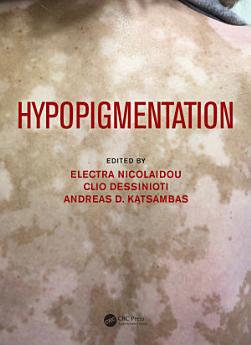Hypopigmentation
About this ebook
and effects, of which vitiligo is only the best known; this comprehensive text from international
experts will enable clinicians to diagnose the full range of these conditions and suggest
the most effective management options for their patients.
Contents: Basic concepts of melanocyte biology * Approach to hypopigmentation *
Historical review of vitiligo * Epidemiology and classification of vitiligo * Pathophysiology
of vitiligo * Segmental vitiligo * Childhood versus post-childhood vitiligo * Pharmacological
therapy of vitiligo * Surgical treatment of vitiligo * Phototherapy and lasers in the treatment
of vitiligo * Emerging treatments for vitiligo * Tuberous sclerosis complex * Oculocutaneous
albinism * Hermansky-Pudlak syndrome, Chediak-Chigasi syndrome, and Griscelli
syndrome * Piebaldism * Waardenburg syndrome * Alezzandrini syndrome, Margolis
syndrome, Cross syndrome, and other rare genetic disorders * Mosaic hypopigmentation
* Skin disorders causing post-inflammatory hypopigmentation * Infectious and parasitic
causes of hypopigmentation * Melanoma leukoderma * Halo nevi * Drug-induced hypopigmentation
* Hypopigmentation from chemical and physical agents * Guttate hypomelanosis
and progressive hypomelanosis of the trunk (progressive macular hypomelanosis)
About the author
Electra Nicolaidou, MD, PhD Associate Professor of Dermatology and Venereology, 1st Department of Dermatology and Venereology, National and Kapodistrian University of Athens Medical School, and "Andreas Sygros" Hospital for Skin and Venereal Disease, Athens, Greece
Clio Dessinioti, MD, Msc, PhD Clinical Fellow, 1st Department of Dermatology and Venereology, National and Kapodistrian University of Athens Medical School, and "Andreas Sygros" Hospital for Skin and Venereal Disease, Athens, Greece
Andreas D. Katsambas, MD, PhD Emeritus Professor of Dermatology and Venereology, National and Kapodistrian University of Athens Medical School, and Head, Dermatology Clinic, Hygeia Hospital, Athens, Greece




